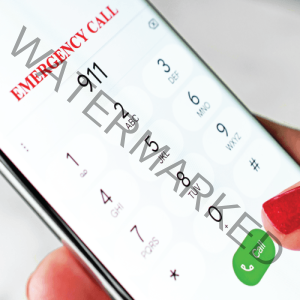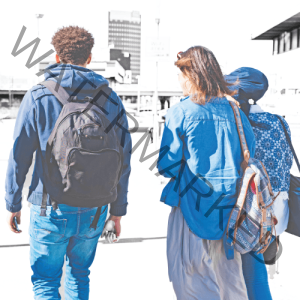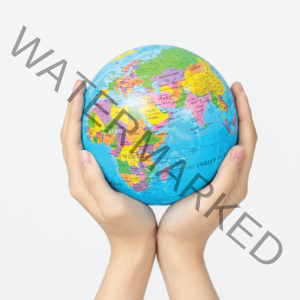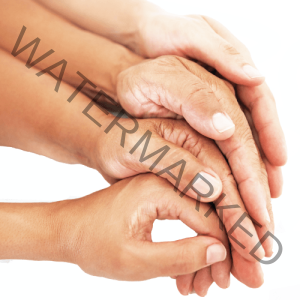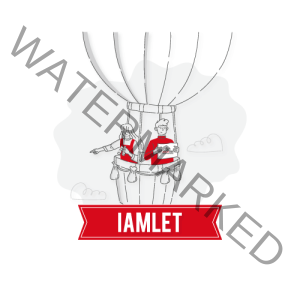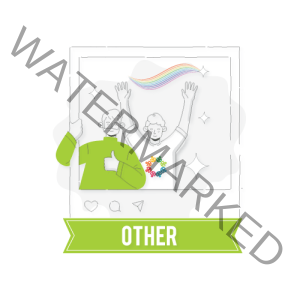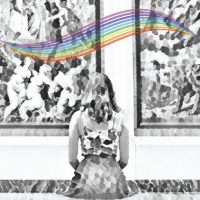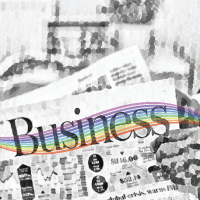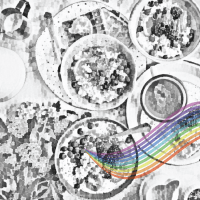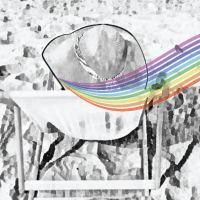- Atilla Tiriyaki
- Average Reading Time: 6 minutes
- Community, Demisexual, Polysexual
- articles, atillat, demisexual, polysexual
What does it mean to be demisexual or polysexual? For all those individuals who identify in this way, how are they different from those who identify within the better-known LGBTQIA+ groups? The reality is that the LGBTQIA+ community is one of the most diverse groups worldwide and is made up of many smaller groups of people from non-traditional sexualities and gender identities. With such a diverse collection of groups and people, Why is it so important for many LGBTQIA+ individuals to create new terms or labels? Words and phrases and that ultimately best sum up or express their thoughts or feelings
Everyone, everywhere around the world, identifies their characteristics, interests, beliefs, the way we look, and even how we feel through the use of labels or terms. The terms used often represent how we think or feel and help us find like-minded or those most similar to ourselves. Humans are fundamentally social beings, and the need to belong is coded into us all from a young age. Over the years, there have been many debates about why there are so many labels, especially amongst certain groups. Though there is a perception, most of those debating often fail to realise that they too are often using labels to define themselves, as terms or labels are part of our everyday lives. Whether you are British, a person of colour or a republican, these are all terms used to convey who you are and what best represents how you think and feel. People who cannot identify using existing labels will seek out other like-minded or similar individuals and collectively create a term that best expresses and represents them.
Usually, when a child is born, a doctor or family member will assign the newborn baby’s gender based on their biological or physical appearance. The older we become, the more aware we are and the more we are taught the meaning of our gender and the expectations around how we should act and behave. Traditions, religions, family beliefs and the societies we grow up within shape and mould the understanding and teaching imparted to us what being a specific gender means. The gender stereotypes will vary depending on the environment we are brought up within and the country and region in which we are born. Unlike the traditional gender definitions, the gender spectrum is more a scale where an individual might not necessarily identify or conform to one side (masculine) or the other (feminine) within the gender scale. Instead, people may lean towards one particular side, frequently move across the scale or not identify at all. The term genderfluid refers to people that will often move across the scale (from masculine to feminine-orientated identities). In contrast, those that identify as non-binary do not identify anywhere within the gender spectrum.
An individual that identifies as demisexual may also identify as a man, woman, within the gender spectrum or as non-binary. Demisexuality falls within the sexual identity grouping within the LGBTQIA+ community, and people that identify as such might be considered either sexual or asexual, depending on the person’s situation. Unlike gay or lesbian individuals who feel sexual attraction towards people of the same gender, a demisexual individual only feels attraction where there is a deep emotional or romantic connection. Any connections formed can be with a person from either the opposite or same gender as their own. Whenever a demisexual person has not developed a romantic or emotional relationship, they will likely be considered more asexual. Meaning they have little to no sexual desire or attraction.
Let us walk through an example relating to demisexuality:
In this example, the strong connection Alex was forming with Jay was creating a physical and sexual attraction. Before meeting Jay, Alex experienced more asexual characteristics and same-sex or gay sexual attractions after his new friendship.
Let us walk through an example relating to demisexuality:
- Alex identifies as a man from a gender perspective and is 25-years-old. Before and after puberty, Alex quickly noticed that, unlike his friends and from what he saw in the media, he did not feel sexually attracted or aroused by people he met. Alex would often fantasise about celebrities and well-known personalities because Alex usually felt connected through their music or work. However, he had not had any close relationships or experienced sexual attraction towards anyone he had met in his everyday life. Shortly after his 26th birthday, Alex was introduced to Jay, who identifies as gay. The two quickly formed a friendship, and over months, the more time they spent together, the sooner Alex realised that he was becoming more attracted to Jay
In this example, the strong connection Alex was forming with Jay was creating a physical and sexual attraction. Before meeting Jay, Alex experienced more asexual characteristics and same-sex or gay sexual attractions after his new friendship.
DEMISEXUALITY
Learn more about Demisexuality with the pride in series. Discover interesting facts, notable people and much more
Not to be confused with polyamory, which is a term that relates to relationships between three or more people. A polysexual individual can be defined as male, female, within the spectrum or as non-binary. The main characteristics of polysexuality are that many within this group will experience sexual attraction and desires, which is considered much more fluid than individuals from other LGBTQIA+ groups. A polysexual individual will likely feel attraction to more than two genders or sexes but will not be attracted to all groups. For example, a polysexual male might be attracted to women, transgender and transexual women; however, they might not be attracted to men or those considered more masculine.
Polysexual people are often referred to as bisexual or pansexual; however, they are unique in their own right, and distinct differences exist between the different groups.
To summarise, Polysexuality from an attraction perspective is more fluid. The attraction can be from within and outside the gender spectrum, more so than any other group within the LGBTQIA+ community. For example, individuals attracted to women and transgender women could identify as polysexual under the classification of the term.
Polysexual people are often referred to as bisexual or pansexual; however, they are unique in their own right, and distinct differences exist between the different groups.
- Polysexuality vs Bisexuality – Bisexual individuals are typically attracted to men and women. However, they may not feel attraction towards some within the gender spectrum. For example, a bisexual individual may not feel sexual attraction towards a transgender person, genderfluid or non-binary person. In contrast, polysexual individuals likely feel attraction towards many genders or sexes. The attraction may include those from within and outside of the gender spectrum
- Polysexuality vs Pansexuality – those identifying as pansexual are often grouped under the bisexual banner as pansexual people will typically be attracted towards a person rather than a gender. Pansexual people, unlike polysexual individuals, usually feel attraction towards those from more traditional gender identities, whereas polysexual individuals feel attraction both inside and outside of the gender spectrum
To summarise, Polysexuality from an attraction perspective is more fluid. The attraction can be from within and outside the gender spectrum, more so than any other group within the LGBTQIA+ community. For example, individuals attracted to women and transgender women could identify as polysexual under the classification of the term.
Polysexual
Learn more about Polysexuality with the pride in series. Discover interesting facts, notable people and much more
For most of us, how we identify is crucial and is much more than where we are born or our skin colour. When we cannot identify, find a term or even label, which best describes how we are thinking or feeling, we might feel alone, isolated, and even some cases, ashamed. The moment you meet people similar to yourself, those who share the same feelings, beliefs, or identity, it can instantly change how they view the world around them. The desire to belong is encoded into all of us, is nothing new and typically, the positives outweigh any perceived negatives relating to labels and terms.
How a person identifies is unique to them. Even though they may see or liken their thinking or feelings towards a term or label, it does not necessarily mean they can identify 100%. Instead, it is often more about bringing together people with similar experiences, beliefs or feelings. Regardless of our personal views and opinions, respecting how a person chooses to live their lives and supporting their desire to live their true and authentic selves is crucial. Ultimately more things in life bring us together than keep us apart.
How a person identifies is unique to them. Even though they may see or liken their thinking or feelings towards a term or label, it does not necessarily mean they can identify 100%. Instead, it is often more about bringing together people with similar experiences, beliefs or feelings. Regardless of our personal views and opinions, respecting how a person chooses to live their lives and supporting their desire to live their true and authentic selves is crucial. Ultimately more things in life bring us together than keep us apart.
Discover all of the topical articles written by people from across the community and friends, all sharing their stories, opinions and experiences
More from Gayther
Discover all of the exciting and entertaining articles written by people from the worldwide LGBTQIA+ community, sharing their stories, opinions and experiences in their own style and from their unique perspectives
IMPORTANT DISCLAIMER: All published articles have been written by members of the general public. Many will likely not be journalists nor be affiliated with any professional bodies associated with members of the media. The articles will likely be based on the authors’ own opinions, views, and experiences. Gayther does not endorse or accept any responsibility or liability regarding any materials within the news and media pages. This page may contain external links to third party websites; Gayther provides these links for your convenience and does not endorse, warrant or recommend any particular products or services. By clicking on any external links, you will leave Gayther and be taken to the third-party website, which you do so at your own risk and by accessing the site, you will be required to comply with the external third party’s terms and conditions of use and privacy policies
Tagged articles, atillat, demisexual, polysexual

